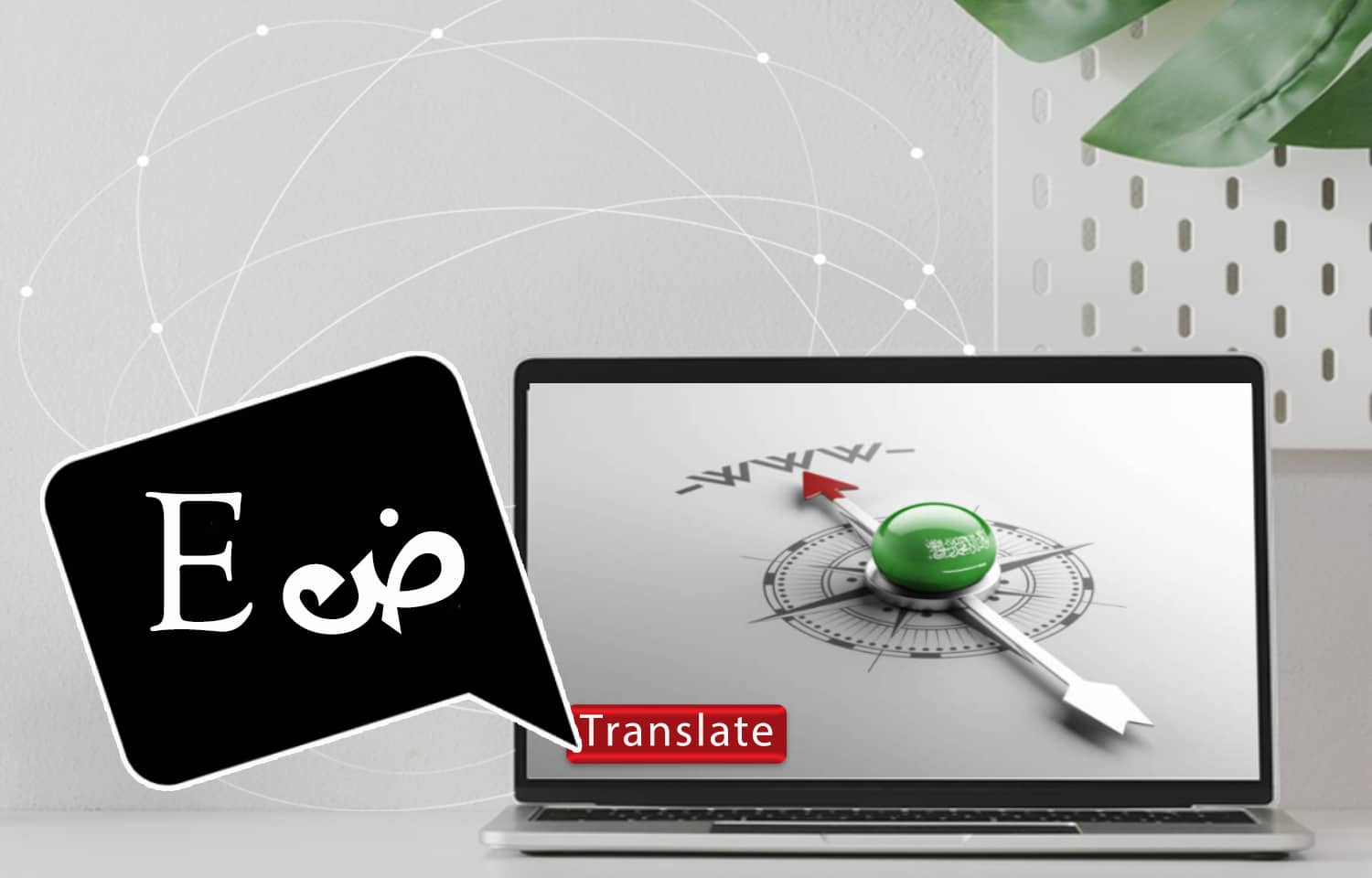Arabic Website Translation: 5 Challenges to Be Aware of

More companies today are considering website translation than in the past few decades. And their reasons are justified.
With global e-commerce and shipping removing all sorts of barriers and many software-as-a-service (SaaS) and fintech products emerging, there’s a growing need for companies to communicate in different languages with their international customers.
Nearly 75% of consumers said they were more likely to buy products or services from websites that spoke their native language. (CSA Research)
The global language services market was estimated to be worth $56.18 billion in 2021, up from $49.6 billion in 2019, according to data by Statista.
While COVID-19 negatively impacted a host of industries worldwide, it gave a 40% boost to the translation industry, with demand for medical translation rising by 49%.
But the process of translating a website is neither easy nor straightforward. Not to mention the many difficulties that arise when a company embarks on translating its website.
In this article, we’re going to focus on the challenges of website translation along with the challenges of translating a website into Arabic.
Why website translation is important
Before we delve into the challenges, let’s first examine some of the top benefits of translating your website.
1. Growing your customer base
Whether you sell physical products or non-physical services like software, having a multilingual website means you can grow your target audience and accordingly your customer base.
Now more than ever, e-commerce businesses are able to grow by translating their online stores and expanding to new regions and countries.
Nigeria-based Jumia is an example of a multilingual e-commerce website. Meanwhile, other e-commerce stores on platforms like Shopify are using translation apps and agencies to translate their stores and products.
You can go about translating your website in two ways
Look at your analytics and see where the majority of foreign customers are coming from. For example, you may be a German company but you’re getting lots of traffic from Canada. But most of this traffic isn’t converting.
By translating your website into Canadian French, you can attract more of those customers towards you. This is what Exakt Health did when they decided to translate their website and mobile app.
The other option is to consider where you want to grow your audience. Let’s say you’re that German company and you want to expand to France and Spain. At this point, you’ll want to translate your website into French and Spanish to grow your target audience.
A survey of internet users found that nearly 40% were not willing to buy from a website that did not provide information in their native language. Moreover, 65% of non-native but proficient English speakers said they preferred content in their native tongue. (CSA Research)
2. Gain ground over the competition
Another benefit that comes with translating your website is going a step further beyond your competition.
It’s one thing to operate in your local market, but it’s another to expand and have a presence and attract clients (or customers) in a different country or region.
3. Go where the competition is
In some cases, you may consider expanding to another country because your competition has already done some legwork for you and has found other international markets to serve, which likely means you can do that too.
4. Required by law
Sometimes, in order to operate in a new market, you’re required by law to make all content available in the country’s native tongue. You then are obliged to translate your website.
This is usually applicable to companies that list on foreign stock markets and therefore have to release information in both English and the local language.
It’s also applicable to companies – like fintech firms – that have to get licenses and approvals to operate in a country.
Website translation challenges
Now that we’ve covered the benefits, let’s look at the challenges associated with website content translation.

1. Website translation isn’t straightforward
The biggest problem with website translation is that it’s not straightforward. It’s not 1+1 = 2. The copy on a website needs to be clear, informative, and friendly.
That’s why website translation requires a combination of localization and transcreation. A website forms a part of your company’s marketing materials. And translating marketing materials is neither easy nor straightforward.
2. Multiple areas to translate
In addition to requiring a degree of creativity, a website isn’t just a few pages that require translation.
There are several aspects involved such as whether you’ll need to translate some of your blog content or UX translation for your buttons and calls-to-action (CTAs) and pop-ups, among others.
That’s in addition to having to employ multilingual SEO best practices.
3. Requires SEO translation
Search engine optimization (SEO) is how web pages appear and rank on Google.
As a business with a website, SEO is an important factor for attracting new customers and building authority.
That’s why SEO translation is an essential part of website translation.
4. May require international SEO
An extension of SEO translation is multilingual or international SEO, which is getting your website to rank in Google’s search results in a different language.
International website optimization is advanced and requires a lot of work from the translator or translation agency.
Using international SEO, companies may choose to enter a market by ranking in Google and attracting customers searching for the same or similar products.
It’s a reverse tactic compared to the abovementioned options.
One of the best ways to ensure that the translation company you’re working with is moving in the right direction when it comes to multilingual SEO is to follow our international SEO checklist.
5. Website localization
Another major challenge when translating a website is using localization.
Localization is a deeper level of translation that takes into account the cultural and linguistic use of the language. This usually happens with languages that are spoken in several countries with some nuances for each country.
An example I like to use is German. If you’re localizing a website into German, you’ll need to consider if you’ll be using the German used in Germany or Swiss German.
While both are German, the nuances give the localized feel and accordingly entice customers and make them feel closer to your site because you speak their local language.
Challenges of Arabic website translation
Now it’s time to a deeper dive into the challenges of translating a website into Arabic.
In addition to the above general website translation challenges, Arabic comes with its own set of challenges.

The following challenges are not specific to a source language.
It’s worth mentioning that despite those challenges, Arabic is the fifth most spoken language in the world with over 350 million speakers. This figure includes standard Arabic and dialects.
– Many dialects require localization
We’ve mentioned the importance of localization when it comes to translating website content. Arabic is proof of the importance and benefits of localization. There are 22 Arab countries in the world, each with its dialects and local culture.
People who live in Egypt don’t speak or use Arabic the same way as those living in Algeria (who also use French extensively) or those who live in Saudi Arabia.
– Lots of grammar rules
Anyone who has ever studied Arabic even for a year will tell you that the language is filled with confusing grammar rules.
It’s why reviewers are needed in most businesses that publish content in Arabic, whether online or in print.
The same applies to translating a website into Arabic. Whether you’re working with a freelancer or an agency, it’s important that they work with an experienced Arabic reviewer to ensure that the content is free of mistakes.
It’s also because of this that we highly recommend working with an Arabic translation company, like TranslationPartner, when translating your website into Arabic.
– Text direction
A bit of a challenge when translating a website into Arabic is the text direction. Arabic is written from right to left.
This should be taken into consideration when developing the Arabic version of your website.
– Images should match the Arab culture
One of the aspects that website developers and companies often neglect is using images that reflect the culture.
In e-commerce, products may not necessarily require culture-focused images, but websites that feature humans will need to take this into consideration.
You’ll notice this more with Emirati and Saudi websites, where men and women wear the traditional garb, while in Egypt and other Arab countries in Africa, clothes differ from those in the Gulf.
It’s worth mentioning that many Arab countries are considered conservative, hence the use of images is important during the Arabic website translation process.
Wrap up
The process of translating your website into different languages is generally a long one, especially if it’s a difficult language like Arabic, and if it’s a niche website.
However, the challenges associated with website translation, and specifically Arabic website translation, shouldn’t deter you from your business objectives and expansion plans.
With nearly 350 million Arabic speakers worldwide, there’s a big opportunity for growth. Even more so with e-commerce and consumer-related products.
When choosing a language service provider for your website translation project, it’s best to ask them as many questions as you can.
Use a translation brief to ensure that you’re both on the same page and that your agency is on track to deliver on time.
Want to learn more about website translation services? Get in touch with TranslationPartner and we’ll help you outline and deliver a website that helps you convert viewers into customers.
